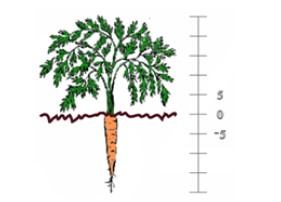Bowie
15231 Hall Rd
Bowie, MD 20721

Our expert team of math educators and enthusiasts has spent over 40 years developing and refining the most powerful teaching methods and materials into the comprehensive, industry-leading Mathnasium Method™. These “Ask Education” features are a way for the Education team members to share their knowledge and love of math with our curious readers and fans.
“Hi Mathnasium. How do I subtract a big number from a small number?”
~ Minka P.
2nd Grade
Hi, Minka! Thank you for the fantastic question! It’s great to hear someone so young is curious about the relationships of numbers. We learn very early on that subtraction is a basic operation, though it can get tricky depending on the amounts we are using.
Consider these cases:
You have five cookies and your friend eats four of them. How many cookies do you have left?One!
5 – 4 = 1
What if your friend eats one more cookie? How many cookies do you have left?Zero!
5 – 5 = 0
Now, what if your friend wants to eat yet another cookie? How many cookies do you have left? We cannot take away one cookie from ZERO cookies since there are not enough cookies. So, what happens to the cookie that the friend wants to eat?
Clearly, when we try to subtract a big number from a small number, the cookie model doesn’t help us. But here is a model that does!
Consider this “carrot” scenario: Farmer Frank is growing carrots. The root of the carrot (the orange part) grows underground, and the stem and leaves (the green parts) grow above ground. The root of the carrot is 20 cm long and the stem and leaves are 25 cm long.

Let’s say an ant crawls from the top of the leaves down 35 centimeters (cm). We can describe the movement below ground (underground) as negative, and the movementabove ground aspositive:
The ant’s starting point is25 cm above ground. The ant moves 35 cm downwards. The ant is now 10 cm below ground, and so, 25 – 35 = -10 cm.
Let’s practice this again: A worm wiggles its way from the top of the soil down 13 cm. Where is the worm now?
The worm starts at 0 cm. The worm moves 13 cm downwards, in a negative direction. The worm is now13 cm underground, and so, 0 – 13 = -13 cm.
Try these subtraction problems on your own. Helpful hint: Use the carrot model to help you if you get stuck!
3 – 4 = ?
If we start at 3 cm and move 4 cm in a negative direction, we are now 1 cm underground.
So, 3 – 4 = -1.
3 – 10 = ?
If we start at 3 cm and move 10 cm in a negative direction, we are now 7 cm underground. Notice the “ten friends,” 3 and 7!
So, 3 – 10 = -7.
7 – 13 = ?
If we start at 7 cm and move 13 cm in a negative direction, we are now 6 cm underground.
So, 7 – 13 = -6.
We usually think about the number line starting at zero and moving to the right as the numbers get bigger. But we can also extend the number line to the left! In doing so, we have the “negative numbers.”

There is so much more to observe regarding the family of negative numbers, and we hope this has only deepened your curiosity, Minka! For all our readers: if you are curious to learn more about subtraction or negative numbers, reach out to your nearest Mathnasium Learning Center. We look forward to seeing you here again soon for our next Ask Education blog post!
Readers: Do YOU have a math-related question you’d like our education team to answer? Submit it at: http://bit.ly/AskMathnasiumEducation.
